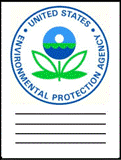United States Environmental Protection Agency

United States Environmental Protection Agency: Publications
Document Type
Article
Date of this Version
2011
Abstract
A review is presented of the use of developmental toxicity testing in the United States and international regulatory assessment of human health risks associated with exposures to pharmaceuticals (human and veterinary), chemicals (agricultural, industrial, and environmental), food additives, cosmetics, and consumer products. Developmental toxicology data are used for prioritization and screening of pharmaceuticals and chemicals, for evaluating and labeling of pharmaceuticals, and for characterizing hazards and risk of exposures to industrial and environmental chemicals. The in vivo study designs utilized in hazard characterization and dose-response assessment for developmental outcomes have not changed substantially over the past 30 years and have served the process well. Now there are opportunities to incorporate new technologies and approaches to testing into the existing assessment paradigm, or to apply innovative approaches to various aspects of risk assessment. Developmental toxicology testing can be enhanced by the refinement or replacement of traditional in vivo protocols, including through the use of in vitro assays, studies conducted in alternative nonmammalian species, the application of new technologies, and the use of in silico models. Potential benefits to the current regulatory process include the ability to screen large numbers of chemicals quickly, with the commitment of fewer resources than traditional toxicology studies, and to refine the risk assessment process through an enhanced understanding of the mechanisms of developmental toxicity and their relevance to potential human risk. As the testing paradigm evolves, the ability to use developmental toxicology data to meet diverse critical regulatory needs must be retained.


Comments
Published in Birth Defects Research (Part B) (2011) 92: 384–394; DOI:10.1002/bdrb.20335